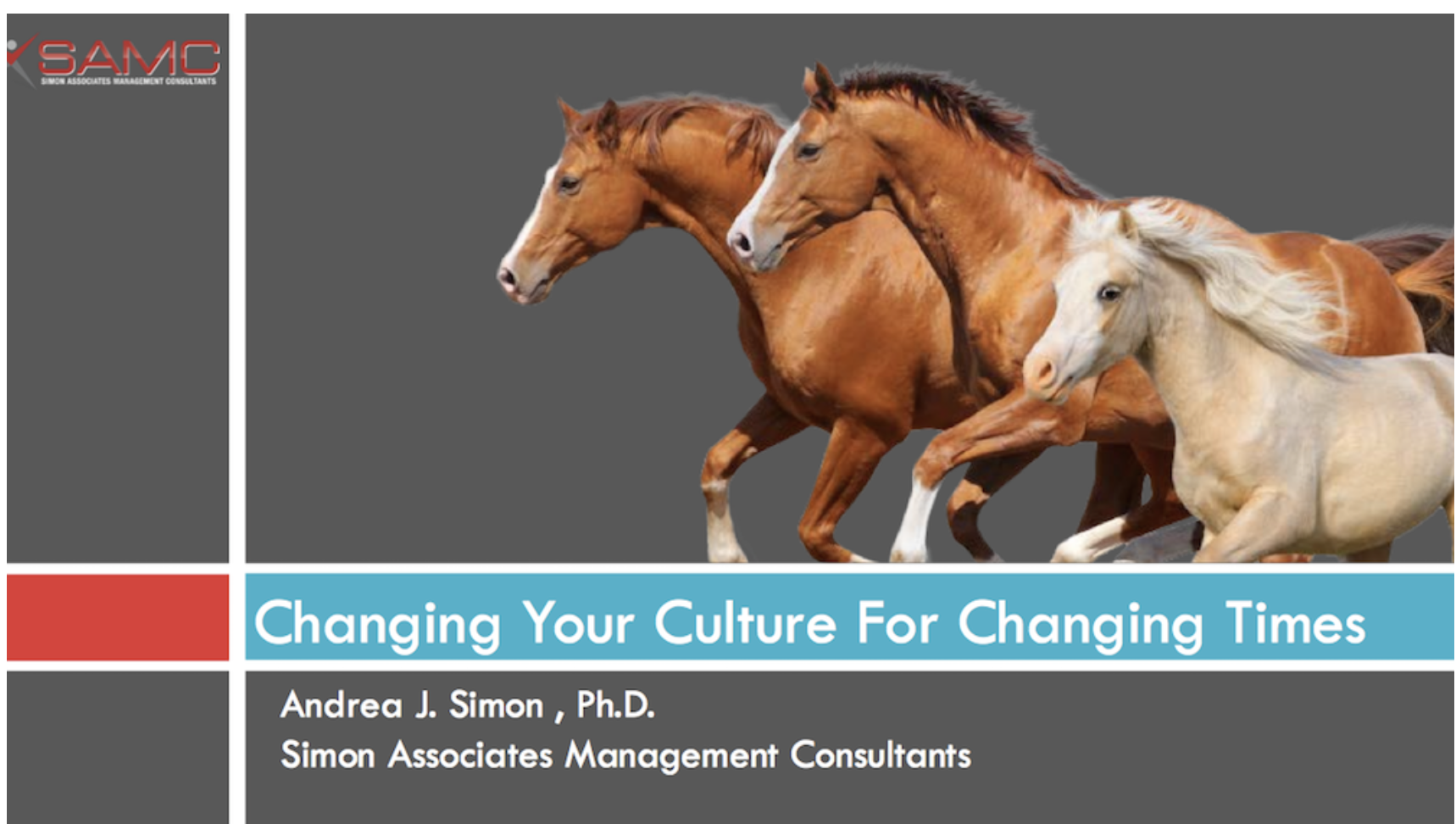“As we express our gratitude, we must never forget that the highest appreciation is not to utter words but to live by them.” John F. Kennedy
This time of year is when we at SAMC reflect on the past and prepare for the future. It is also a time to express our appreciation and gratitude for successes, as well as what we have tried and may not have achieved.
Reflecting on gratitude and expressing it is as essential to people’s personal lives as it is to their businesses and careers. In fact, those who focus on expressing their gratitude tell us that it repays them in spades. So why don’t we all do it?
Gratitude: what does that really mean?
While the terms gratitude and appreciation may seem interchangeable, there are actually some subtle differences. While appreciation is a way of recognizing a job well done, gratitude is more personal. It expresses thanks for a benefit one has received.
As we work with companies and not-for-profits, we often find that people seem to have a hard time saying a simple “thank you” to someone. We’re not talking about an award or special recognition for completing a task, just a simple “Hey, thanks for doing that so well. I truly appreciate it.”
It’s rare to hear business leaders say how grateful they are for their team, their clients or their successful company. Why is this?
There’s one exception: a long-term client of ours whom we just adore, in large part because they are always expressing their gratitude to us (their consultants), their staff and their clients. As we receive their thanks and hear the same from their staff, we believe that their success is mainly due to this feeling of and consistent expression of gratitude.
Today’s blog is about this gift of gratitude: what is it, why you and your company should embrace it, and how it will make you and those around you smile and shine. Most of all, it is about how to build an organizational culture that goes beyond the functional things that have to be done and creates an entirely new perspective on the people getting it done. Along the way, it also shines a light on how company culture really matters.
Why should we worry about appreciating others and expressing our gratefulness or gratitude?
People, especially in business, typically receive feedback that is negative. They hear problems, issues, criticism, negativity and unfulfilled expectations about what they have or have not accomplished. Or they hear nothing, which is as powerful as actual commentary.
What about the things they did well? There are always positive and negative elements to someone’s work, so why focus only on the negative? Hearing “thank you” and “I appreciate the work you are doing” deeply affects how people feel about their work as well as the quality of the work they’re producing.
We know from growing research in the neurosciences how the heart and the head connect. When people are happy, they trust others, take more risks and think about the “we” rather than protecting the “I.”
Use gratitude to build a great team
To build a strong team, a productive organization and a meaningful corporate culture, business leaders need to focus as much on the positive things employees are achieving as on problems or obstacles. It’s no surprise that recent studies show that the best-performing teams receive roughly six positive comments for every negative one. They then share this positivity with their co-workers, causing a wonderful ripple effect.
Gratitude and employee engagement
Employees need to know that what they are doing matters and is recognized by others. This need for positive affirmation goes beyond a paycheck.
Organizations across all industries need to nurture and reinforce this sense of purpose in their employees. How? By encouraging them and showing them gratitude. This gives them the incentive to go beyond the minimum, to do more than the simple job requirements, to think innovatively and try out new ideas. It’s this extra effort that truly defines employee engagement.
What’s more, showing gratitude is free. Used wisely, it can even turn a toxic work environment into a productive and efficient one.
Common mistakes to avoid when using gratitude in the workplace
Many companies are now beginning to recognize the real power of gratitude and are looking into ways to implement it. But what many of them end up doing is re-purposing outdated recognition programs which only reward performance and achievement rather than expressing to their staff how much their effort is appreciated.
Another fairly common mistake that many businesses make is handing out the same type of praise to everyone. It’s important to remember that not everyone receives appreciation and gratitude in the same way. Some may not be comfortable with public approval, while others like it. Some might cherish written notes, others not. Companies need to tailor their expression of gratitude to the individual, not the organization’s “ways of doing things.” Gratitude is personal.
One more thing: employee bonuses or rewards once a year aren’t enough. Gratitude has to be expressed from all levels of the organizations, often, and reinforced from the top down. An excellent place to start: introduce gratitude during staff meetings, as well as in internal communications.
Organizations that understand the power of gratitude must create a culture that focuses on caring, empathy and appreciation.
Cultures that successfully embrace gratitude tend to share these basics attributes:
- They treat their employees like real people, not anonymous workers.
- They trust and empower those employees to do great things.
- They accept mistakes, encourage original ideas and reward risk-taking.
- They routinely express appreciation for the person, not just the job.
- They hire individuals who care about the organization’s future and who will add to the positive culture.
We particularly like Inc.com‘s “7 Tips for Creating a Positive Workplace Culture”:
- Begin with gratitude.
- Create a safe environment.
- Don’t leave your dirty dishes in the sink.
- There are only opportunities in business, no problems.
- Consistency is key.
- Encourage positive thinking.
- Don’t sacrifice the important for the urgent.
While we’re on the subject of gratitude and culture, 2 great blogs:
- Business Stuck? Maybe it needs a new corporate culture
- On the Brink: How to Dramatically Transform Your Company Culture
One of our favorite On The Brink podcasts:
And our culture change workshop:
Need to build some gratitude into your business? Our culture change workshop will show you how to make real changes and make them stick. (Click on the image below)
Are you ready to show your gratitude and start soaring?
If you want to learn more about the power of gratitude and how to create a culture of positivity where employees are appreciated and valued, Simon Associates Management Consultants (SAMC) can help. Contact us today to discuss how we can help your organization change your culture for a more positive, productive future.
From Observation to Innovation,

Andy and Andi Simon
Corporate Anthropologist | President
Simon Associates Management Consultants
Info@simonassociates.net
@simonandi
Don’t miss an episode of our On The Brink podcast!
Subscribe now




